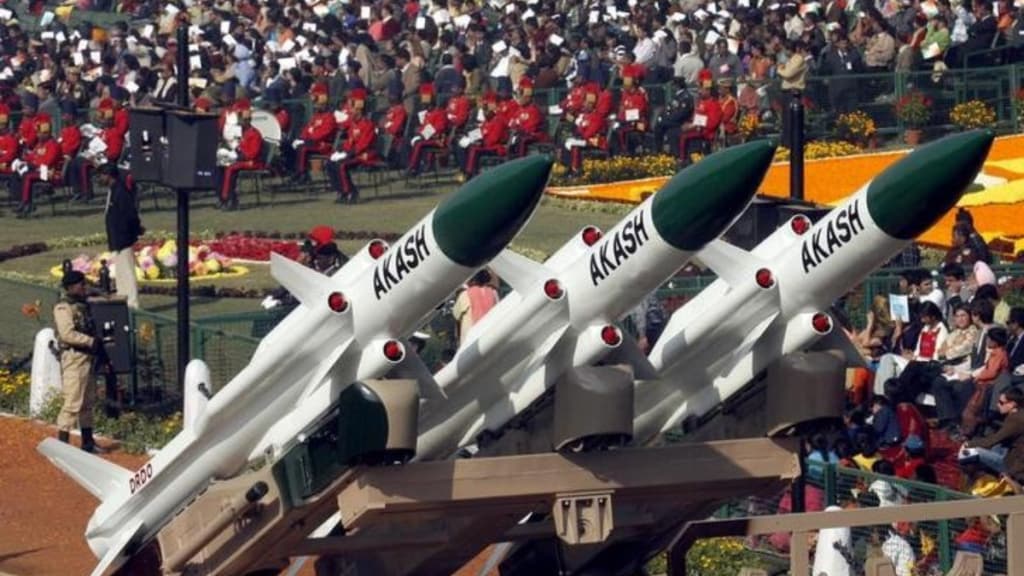Brazil’s military is on the brink of a significant decision as it evaluates new air defence systems to bolster its national security. This initiative was set into motion by Ordinance EME/C Ex. No. 1,338/2024 on June 21, 2024, aiming to enhance Brazil’s air defence capabilities through the Medium Altitude/High Altitude Air Defence Artillery System project (Pit Sis AAAe Me Altu/G Altu).
As part of the Army’s Strategic Program for Air Defence, Brazil is considering India’s Akash missile system and China’s Sky Dragon 50 for this crucial upgrade.
The Brazilian Interest in Akash
The Akash missile system, developed by India’s Defence Research and Development Organization (DRDO), has garnered significant interest from Brazil. This system, integrated into the Indian Air Force in 2012, boasts a range of about 25 kilometers and the ability to target multiple aerial threats simultaneously. India’s Defence Research and Development Organization (DRDO) has claimed that it can destroy four aerial targets at once within a 25-kilometer range, a feat demonstrated during the Indian Air Force’s ‘Astra-Shakti’ exercise.
Brazil’s Defence Needs
General Tomas Miguel Paiva of Brazil had raised alarms earlier this year about Brazil’s inadequate medium and long-range air defence systems. The Brazilian Army currently has systems capable of intercepting threats only up to 3,000 meters. Consequently, General Paiva has proposed a government-to-government agreement with India to acquire the Akash system, reflecting the urgency of filling this defence gap.
The Competition: China’s Sky Dragon
The Chinese Sky Dragon 50 (DK-10) is another contender in this evaluation process. A Brazilian military delegation is set to visit China to assess this system firsthand. The Sky Dragon 50, produced by China North Industries Corporation (Norinco), has demonstrated its capabilities during live fire exercises attended by Brazilian officials.
Strategic Diplomatic Dynamics
The decision extends beyond technical specifications; it intertwines with diplomatic and strategic negotiations. A significant aspect of this process is the potential for reciprocal agreements. If Brazil opts for India’s Akash missile system, there is speculation about whether the Indian Air Force might, in turn, procure Brazil’s C390 Medium Transport Aircraft, underlining the quid pro quo nature of such defence deals.
Brazil’s Detailed Evaluation Process
Top diplomatic sources confirmed to FinancialExpress.com that the Chief of Staff of the Brazilian Army has established a committee to scrutinize potential partners for this project. The committee’s mandate includes presenting a comprehensive report by October end, which will evaluate the best options for Brazil’s medium-altitude air defence needs.
“The Chief of Staff of the Brazilian Army has set up a committee to assess possible partners for the supply of medium range medium altitude anti-artillery system,” said sources.
And, “By the end of October the committee will have to present a report on what would be the better options.”
FinancialExpress.com has reported previously in August 2023, Commander of Brazilian Army General Tomas Miguel Ribeiro Paiva accompanied by an official delegation was on a week-long visit to India. He had on former Indian Army Chief General Manoj Pande, and exchanged ideas and held constructive discussions on various contemporary issues.
His second visit was for the first ever India-Brazil 2+2 Secretary level talks earlier this year in February.
The Strategic Importance of the Akash System
The Akash system’s significance lies not only in its technical prowess but also in its strategic deployment. It was initially developed as a surface-to-air missile system and later adapted to serve broader missile defence roles. Each battery of the Akash system includes four launchers, each capable of holding three missiles. A single battery can detect up to 64 targets and neutralize 12 simultaneously, offering a robust defensive capability in the event of a concentrated aerial assault.
Historical Milestones and Future Prospects
India’s success with the Akash system has set historical milestones, notably when it destroyed four targets simultaneously during a test in December last year. This achievement underscores the system’s advanced technological capabilities, making it a strong candidate for Brazil’s defence needs.
The Brazilian Army’s recent issuance of a Request for Quote (RFQ) highlights the formal and transparent approach being taken to explore both domestic and international air defence options. This RFQ process is critical for ensuring that Brazil selects a system that offers optimal performance, cost-effectiveness, and strategic advantage.
The Broader Context
This defence procurement initiative has surprised many in the Brazilian market, given that it was previously assumed the Brazilian Air Force (FAB) would manage high-altitude air defence systems while the Army focused on short and medium-range systems. The new directive requiring a feasibility study within 90 days reflects a broader strategic shift, underscoring the Army’s increasing role in national air defence.
Moving Forward
As Brazil moves forward with this critical evaluation, the outcomes will have profound implications for its national security and international relations. The decision between India’s Akash and China’s Sky Dragon systems is more than a mere technical choice; it represents a strategic alignment that will shape Brazil’s defence landscape for years to come.

